#Cornelia lewis randolph
Photo
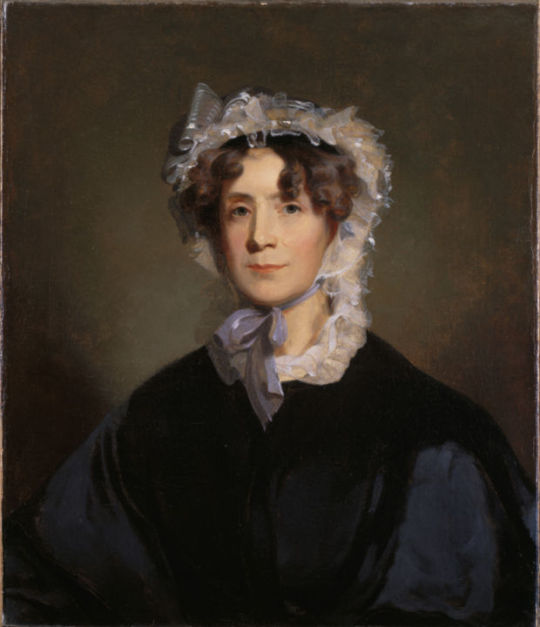
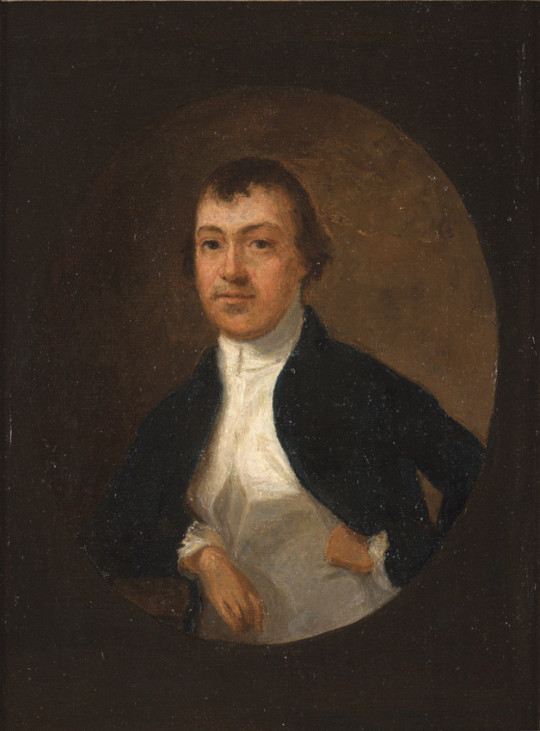
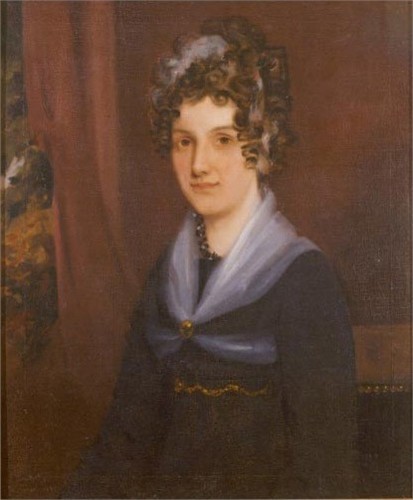

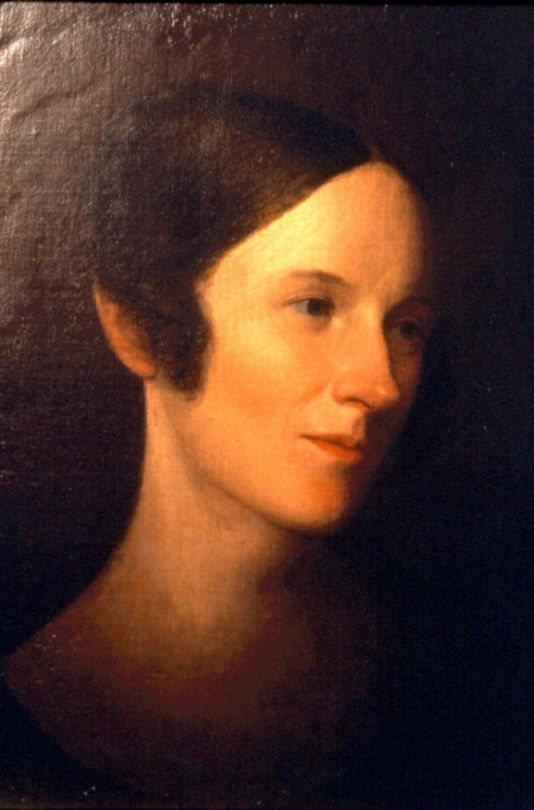
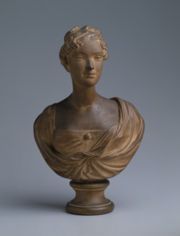
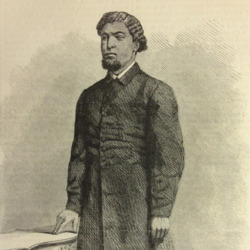
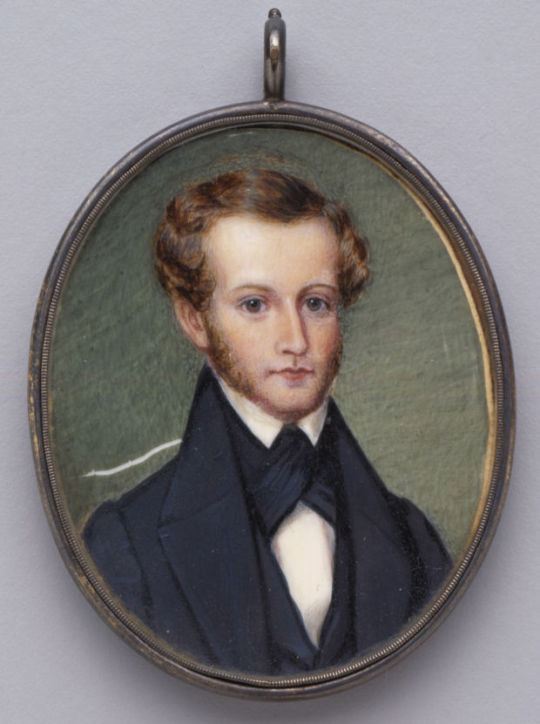
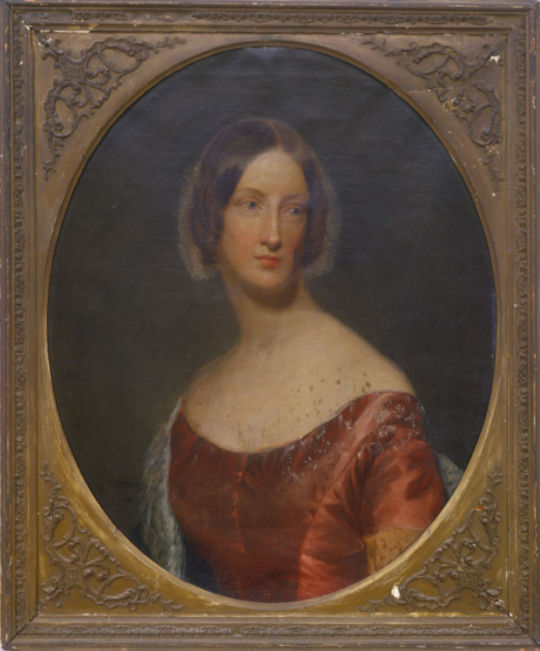
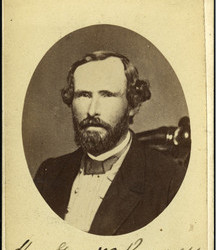
Randolph Family
1) Martha “Patsy” Jefferson Randolph (1772 – 1836), Thomas Sully, unknown
2) Thomas Mann Randolph Jr (1768 - 1828), unknown, unknown
3) Ann Cary Randolph (1791–1826), James Westhall Ford, 1823
4) Thomas Jefferson Randolph (1792–1875), Charles Wilson Peale, unknown
5) “Eleanor/a” Ellen Wayles Randolph (1796–1876), most likely a Peale, unknown
6) Cornelia Jefferson Randolph (1799–1871), William Coffee, 1819
7) Benjamin Franklin Randolph (1808–1871), unknown, unknown
8) Meriwether Lewis Randolph (1810–1837), unknown, unknown
9) Septimia Anne Randolph (1814–1887), unknown, unknown
10) George Wythe Randolph (1818–1867), David H. Anderson, 1866
Not Pictured: Ellen Wayles Randolph (1794–1795), Virginia Jefferson Randolph (1801–1882), Mary Jefferson Randolph (1803–1876), James Madison Randolph (1806–1834)
#ellen is my favorite#Martha Jefferson randolph#patsy jefferson#Thomas mann randolph#Ann Cary Randolph#Thomas Jefferson Randolph#ellen Wales randolph#Cornelia lewis randolph#meriwether lewis randolph#septimia anne randolph#George wythe randolph#virginia Jefferson randolph#mary Jefferson randolph#james madison randolph
107 notes
·
View notes
Text
Meriwether Lewis Randolph would be big into mythology. Celtic, Norse, Greek, Roman, all of ‘em. He’d also be obsessed wit Ancient Greece, especially Plato and his writings. He’d read about homosexuality in Ancient Greece and share it with James, Mary, and Cornelia, because they all find it very amusing and love that their brother cares enough about them to share. He’d love Frankenstein, it’d be his all time favorite book and he’d talk about it with James, who would then post his brother’s theories and such on his blog.
4 notes
·
View notes
Text
Ah yes, one my favorite things about Cornelia and Mary Randolph is them living together in their big lesbian home at the end of their lives.
#Cornelia? lesbian#mary? possibly#most likely#lesbians#american history#us history#history#Cornelia lewis randolph#mary Jefferson randolph#pressles musing
30 notes
·
View notes
Note
Please tell me info on Patsy Jefferson's children!
Children of Martha Jefferson Randolph and Thomas Mann Randolph Jr.:

Ann Cary Randolph Bankhead (1791–1826)
Ann was born healthy on January 23rd, 1791 at Monticello and resembled her mother greatly. Her grandfather spelled her name as “Anne”. She was named after her paternal aunt of the same name [x]. In 1808 she married Charles Lewis Bankhead who was called an “unworthy person of his name”, the Bankheads were friends of the Jeffersons. She had three sons and one daughter that lived to adult hood. She was close with her younger sister Virginia. Of his “Anne” Jefferson said:
“I think her apt, intelligent, good humored & of soft & affectionate dispositions, & that she will make a pleasant, amiable and respectable woman.“
In 1811 the Bankheads purchased Carlton, an 800 acre farm adjacent to Monticello property. Charles Bankhead was very alcoholic [x], abusive, and was prone to frequent bouts of anger. By 1816 the Bankhead’s farm in for production in corn and tobacco [x] was going to ruin and Thomas Jefferson added land to their’s to increase holdings [x]. Before her death her sister, Cornelia, wrote to their sister Mary:
“you had better come down this morning for you will never see sister Annagain if you do not, there is no hope for her. Virginia ought to be told for she must know the worst soon, and grandpapa.”
Thomas Jefferson was present at her death in an “adjoining apartment” and a man named Robley Dunglison told him she was dead. Jefferson began to cry and “abandoned himself to every evidence of intense grief.” It was following the birth of her daughter that Ann died of complications following the childbirth on February 11th, 1826. She was buried in the family graveyard at Monticello.

Thomas Jefferson Randolph Jr. (1792–1875)
Thomas was born on September 12th, 1792. His education was at home and in Philadelphia where he was sent at fifteen and was supervised by his grandfather. In 1815 Randolph married Jane Hollins Nicholas (1798–1871) and they moved to nearby Tuftton. They had thirteen children:
Margaret Smith Randolph (1816–1842)
Martha Jefferson Randolph (1817–1857)
Mary Buchanan Randolph (1818–1821)
Careyanne Nicholas Randolph (1820–1857)
Mary Buchanan Randolph (1821–1884)
Eleanor Wayles Randolph (1823–1896)
Maria Jefferson Carr Randolph (1826–1902)
Carolina Ramsey Randolph (1828–1902)
Thomas Jefferson Randolph, Jr. (1829–1872)
Jane Nicholas Randolph (1831–1868)
Wilson Cary Nicholas Randolph (1834–1907)
Meriwether Lewis Randolph (1837–1871)
Sarah Randolph (1839–1892 or 1895)
Thomas was elected to the Virginia House of Delegates and served for four years. Growing up and throughout his life he was close to his grandfather and was appointed executor of his estate after his death in 1826. Because the estate’s debt Thomas ordered the sale of Monticello land and property. In 1829, Thomas published Memoir, Correspondence And Miscellanies: From The Papers Of Thomas Jefferson. After Nat Turner’s slave rebellion of 1831, Thomas introduced an emancipation plan in the House but it was defeated. 1850, Randolph was elected to the Virginia Constitutional Convention of 1850. 1857 to 1864, Thomas served as the rector of the University of Virginia. During the Civil War, he held a colonel’s commission in the Confederate Army. Thomas served as the temporary chairman of the 1872 Democratic National Convention. He died at Edgehill following a carriage accident on October 7th, 1875 [x].
Ellen Wayles Randolph (1794–1795)
Died young.

Eleanora “Ellen” Wayles Randolph (1796–1876)
Ellen was born on October 13th, 1796. She was accomplished academically, particularly in languages, and a favorite of her grandfather’s. Ellen often accompanied her grandfather on trips to Poplar Forest. She was considered the “belle of the family” [x] and traveled vastly where she was very popular. On May 27th 1825, in the parlor at Monticello, Ellen married Joseph Coolidge. She had met when Coolidge visited Virginia in 1824. After their marriage, the Coolidges moved to Boston and did not return to Monticello until after Thomas Jefferson’s death. Ellen had six children including twin boys, she handled the family while her husband was away traveling for business. Ellen met him in London in 1838. After they went to Switzerland and spent years in Europe before returning to Boston. Ellen died in April 1876 and was buried at Mount Auburn Cemetery in Cambridge, Massachusetts [x].

Cornelia Jefferson Randolph (1799–1871)
Cornelia was born at Monticello and as a young girl, often accompanied her grandfather on visits to Poplar Forest. She was especially skilled in architecture and drawing and practiced this skill by creating replicas of construction blueprints for the University of Virginia. When she was just a teenager Cornelia began to help John Hemings (brother of Sally Hemings) learn to read and write by giving him a dictionary [x]. Cornelia never married and lived at Tufton and then Edgehill (homes of her brother). In the 1830s a school was established at Edgehill where Cornelia taught drawing, painting, and sculpture. She later translated and edited The Parlor Gardener: A Treatise on the House Culture of Ornamental Plants from French to English. After the Civil War, Cornelia moved to Alexandria, Virginia and lived with two of her sisters at the home of her niece Martha Jefferson Trist Burke. She died there on February 24th, 1871 and was buried at Monticello in the graveyard.
Virginia Jefferson Randolph (1801–1882)
Virginia “Ginger” (some sources indicate she was coined) Jefferson Randolph was born in 1801 at Monticello. As her siblings did, she spent much of her childhood at Monticello and occasionally accompanied her grandfather on trips to Poplar Forest. Of her grandfather’s talents and interests, Virginia shared a deep enamor for music who bought her a pianoforte. After a youthful romance and long engagement with Nicholas Philip Trist, the two were married at Monticello on September 11th, 1824. They remained there while Nicholas studied law and acted as Jefferson’s private secretary. Her husband helped her older brother to settle Jefferson’s estate after his death.
In 1828, Nicholas accepted a State Department clerkship in Washington, D.C. and Virginia remained at her brother’s Edgehill home until 1829 her children and her mother rejoined him. In 1834, when Nicholas was appointed consul, the Trists moved to Havana, Cuba where they remained until 1841. Late 1840s, Nicholas was sent to Mexico to negotiate a peace treaty to end war with that country. He was fired by President James K. Polk following these negotiations and they were faced bankruptcy. Virginia began helping at the school runned by her sisters. The Trists moved to Alexandria, Virginia and a her husband’s death in 1874, Virginia lived with one of her three children until her death in April of 1882.

Mary Jefferson Randolph (1803–1876)
Mary, born in 1803, was named after her maternal aunt Maria who died from complications from birth in 1804. She was born at Edgehill on November 2nd, 1803. She occasionally accompanied Thomas Jefferson on trips to Poplar Forest. She never married and continued living at Edgehill where she helped her sister-in-law Jane supervise the household. Mary and her sister Cornelia were close served as nurses during times of outbreaks. After the Civil War, Mary moved to Alexandria, Virginia, to live with two of her sisters. She remained there until her death on March 29th, 1876.
James Madison Randolph (1806–1834)
James Madison Randolph, born in 1806 was born at the President’s House a visit from his mother to his grandfather, Thomas Jefferson, then serving as president in Washington, D.C. James was named after his grandfather’s Secretary of State. James was educated at home, in schools in Albemarle and graduated from the University of Virginia. He was described as being of a “gentle and quiet nature”, James never married and lived alone. He ran one of the smaller family farms until it was sold. He died after a brief illness at Tufton, his older brother’s estate, at the age of 28 in 1834.

Benjamin Franklin Randolph (1808–1871)
Benjamin Franklin Randolph was born in 1808 on July 14th at Edgehill. Frail, he was delicate and educated by his mother and sisters and at a nearby school. He was attending the University of Virginia but the family’s financial difficulties caused him to be forced to drop-out of college. By 1829, he was back at the University studying medicine. He had been elected three times as prize essay writer [x]. The Jefferson Society elected him as a member, and by his professors he was considered best in his class. He graduated on July 18, 1831. After, he moved to Halifax County, then to Richmond before back Albemarle. Benjamin courted Sally Champe Carter, and they were married on November 13th, 1834. He had three children: Isaetta (born March 24, 1836), Lewis (born June 13, 1838), and Robert (born April 15, 1851). They received 642 acres of land lateral to Redlands. On the side of a small mountain they built named their estate named “Sharon,” later renamed “Round Top.“
James was a physician, a farmer and involved himself in local public affairs. He became a magistrate in 1846 and served for eighteen years. He was also a state senator from 1853-1856. James was a strong supporter the Confederacy during the Civil War. Both Lewis and his son-in-law served in the Confederate Army. Early 1867, Benjamin suffered severe illness and never fully recovered. He died not long after on February 18the, 1871 and was buried in the graveyard of Christ Church, Glendower.

Meriwether Lewis Randolph (1810–1837)
Meriwether Lewis, born in 1810, was born at Monticello and named after Meriwether Lewis. He studied law, moral and natural philosophy at the University of Virginia, 1829-1831, but chose to pursue involvement in the western frontier. He worked for a short time as a clerk in the Department of State, as his brother-in-loaw did before being appointed Secretary of Arkansas Territory in February 1835 under President Andrew Jackson. On April 9th, 1835, he married Elizabeth Martin, a grandniece to President Jackson and they had one son, Lewis Jackson Randolph (1836-1840). After his commission ended, he began purchasing land, eventually gaining over ten thousand acres. He died of malaria in Arkansas, on September 24th, 1837, and was buried on his plantation Terre Noir.

Septimia Anne Randolph (1814–1887)
Septimia was born in 1814 and was referred to as "Tim,” or “Pet” by her family. She lived for twelve years of her life at Monticello. Fall of 1826, Tim accompanied her mother and younger brother George Wythe Randolph to Boston. While in Boston, Septimia attended school and studied music at the home of her sister Ellen. She learned to play the piano and the guitar (her favorite was guitar). She returned to Virginia in the fall of 1828, and then moved to Washington, D.C. with her mother to live in the house of her sister Virginia. She attended St. Mary’s convent school and accompanied her mother and sisters Cornelia and Mary back to Edgehill during the summertime. It is noted she may of contracted tuberculosis and traveled south for her health, visiting family and friends in Louisiana, Florida, and Cuba (one of her sisters).
Upon her mother’s death in October of 1836, Septimia used her mother’s bequest of $4,000 to return to Cuba, where she became engaged to a Dr. David Scott Meikleham, a Scottish graduate of Cambridge. They married on August 13th, 1838, at Edgehill and returned to Cuba together. They left Havana in 1844 for a better climate and educational purposes for their children. They visited family in Virginia, Washington, D.C., and Scotland (their one year old baby died there). They settled in New York City and her husband practiced medicine until his death from malaria on November 20th, 1849. In order to support herself and four children, Septimia kept a boardinghouse. Her eldest son, William Moreland, bought it from her. She after took her two daughters, Alice Esther and Ellen Wayles, and her son Thomas Mann Randolph to live in Virginia once more. She later lived in Maryland and in Washington she died on September 14th, 1887.

George Wythe Randolph (1818–1867)
George Wythe Randolph was born in1818-1867) and was coined "Geordie”. He was named after his grandfather’s law teacher and mentor, George Wythe. He had a brief education and served in the United States Navy from 1831-1839. In 1841 he obtained his law degree from the University of Virginia in 1841 and practiced successfully in Albemarle until 1851, when he moved to Richmond. he served there on the Richmond City Council and was an officer of the Virginia Historical Society. April 20th, 1852, Geordie married Mary Elizabeth Adams Pope, a wealthy widow, and lived in a financially nice neighborhood. They had no children together. For a short time he was a state senator for Richmond.
Geordie was elected to the 1861 Virginia Convention as a secessionist and served with Richmond Howitzers. He eventually rose the rank in the Confederate Army as Brigadier General. He was nominated Confederate secretary of war on March 17th, 1862, but had conflict with Jefferson Davis and had poor health which made him resign on November 15th, 1862. He died of tuberculosis at Edgehill on April 3rd, 1867, and was buried in the Monticello graveyard.
#flood pressles box#sincerely anonymous#patsy jefferson#thomas jefferson#ann Randolph bankhead#George wythe randolph#Thomas mann randolph#Septimia Randolph Meikleham#Meriwether lewis randolph#benjamin franklin randolph#james madison randolph#mary randolph#virginia randolph#Cornelia randolph#Ellen Randolph coolidge#thomas Jefferson randolph
98 notes
·
View notes
Quote
The boys were Thomas Jefferson, James Madison, Benjamin Franklin, Merriweather Lewis, and George Wythe. The daughters were Anne, Ellen, Virginia, Cornelia, and a little thing that could just run about when I came away. Her name was [Septimia] . . . Only two of them were married when I came away. Jeff married Jane Nicholas . . . and Anne married Charles S. Bankhead. Anne, Ellen, and Merriweather Lewis had the fresh rosy countenance of the Jefferson family. The rest of the family . . . had the Randolph complexion, which was dark and Indian-like . . . Virginia and Cornelia were tall, active, and fine looking, with very dark complexions. Mr. Jefferson was perfectly devoted to his grandchildren, and they to him. They delighted to follow him about over the grounds and garden, and he took great pleasure in talking with them, and giving them advice, and directing their sports. I have heard him tell them enough of times that nobody should live without some useful employment . . . Merriweather Lewis was a very bright little fellow. I always thought him the most sprightly of all the Randolph children.
The Private Life of Thomas Jefferson, Hamilton W. Pierson
37 notes
·
View notes
Note
I just finished America's First Daughter and I am absolutely in love with the Randolph children, especially Cornelia. Do you know of any further reading or sources on them? Thank you very much, have a wonderful day!
Ellen and Virginia are my favorite (especially Ellen).
Did something on the Randolph children: here.
Online sources: here, here
Ann Cary: here, here
Thomas “Jeff” Jefferson: here, here
Eleanora “Ellen” Wayles II: here, here, here
Cornelia Jefferson: here, here, here
Virginia Jefferson: here, here
Mary Jefferson: here
James Madison: here, here
Benjamin Franklin: here
Meriwether Lewis: here, here
Septimia “Tim” Anne: here, here
George “Geordie” Wythe: here, here, here, here, here
24 notes
·
View notes
Note
what was jefferson like as a grandfather
Very cool.
Thomas Jefferson had a total of twelve grandchildren to survive to adulthood. Eleven of the twelve were born to Jefferson’s eldest daughter, Martha, and Thomas Mann Randolph Jr. who served as Governor of Virginia. Martha’s younger sister, Maria, gave birth to her only surving child, Francis Eppes.
Anne Cary Randolph (1791–1826)
Thomas Jefferson Randolph (1792–1875)
Ellen Wayles Randolph (1796–1876) Named after her deceased older sister (born in 1794 and died 1795).
Cornelia Jefferson Randolph (1799–1871)
Virginia Jefferson Randolph (1801–1882)
Francis Wayles Eppes VII (1801- 1881) The only surviving child of Jefferson’s youngest daughter.
Mary Jefferson Randolph (1803–1876)
James Madison Randolph (1806–1834)
Benjamin Franklin Randolph (1808–1871)
Meriwether Lewis Randolph (1810–1837)
Septimia Anne Randolph (1814–1887)
George Wythe Randolph (1818–1867)
Thomas Jefferson enjoyed private time with his family. He never remarried after the death of his wife and their surviving family- daughters, Martha “Patsy” and Maria, and their twelve children- became his refuge and comfort. At the age of 73, he began bringing his grandchildren to Poplar Forest. Two of Martha Jefferson Randolph’s eleven children, Ellen, 19 years old, and Cornelia, 16, spent the most time at Poplar Forest and cherished the days with “Grandpapa.”
Grandfather Jefferson had an impact on every one of his grandchildren. Their pursuit of education, public service, farming, and family is evident in each or their lives:
Anne (January 23, 1791– February 11, 1826): Thomas Jefferson’s eldest grandchild and the daughter of Patsy Jefferson Randolph was born at Monticello. Ann died of complications following childbirth five months before her grandfather, on February 11, 1826,4 and was buried in the family graveyard at Monticello.
Thomas “Jeff” (1792—1875): born at Monticello, was the eldest son of Martha Jefferson Randolph and the eldest grandson of Thomas Jefferson. His education was supervised by his grandfather. Randolph soon took over the management of his grandfather’s affairs and displayed an aptitude for finance. Randolph became a member of the Board of Visitors at the University of Virginia, where he later served as Rector. Among other public offices, Randolph served six terms in the Virginia House of Delegates, where he supported the gradual emancipation and deportation of slaves. Too old to fight during the Civil War, Randolph nevertheless was given a colonel’s commission in the Confederate army, and in 1872 he served as chairman of the National Democratic Convention.Thomas Jefferson Randolph died at Edgehill following a carriage accident on October 7, 1875.
Ellen (Eleonora) (October 13, 1796-April 30, 1876): Was the fourth child born to Martha Jefferson Randolph. An accomplished scholar, particularly in languages. Ellen often accompanied Jefferson on trips to Poplar Forest. She was considered the belle of the family and traveled to Richmond, Washington, D.C., Baltimore, and Philadelphia, where she was popular with her grandfather’s old friends, as well as young gentlemen. Married to Joseph Coolidge in the parlor at Monticello in 1825. Her husband’s business interests took him to China for long periods, leaving Ellen to single-handedly manage the family. It is unfair to say that Thomas Jefferson had a favorite granchild, it is possible that he enjoyed Ellen’s company the most; she was clearly his intellectual heir despite never attending college; for her part she called her grandfather her “earliest best friend”.
Cornelia (1799-1871) : Born at Monticello and never married, Cornelia was an avid student of her grandfather’s, She learned mechanical drawing from Jefferson and practiced by creating renderings of architectural plans for the University of Virginia. excelling particularly in drawing; taught at a school teaching drawing, painting, and sculpture; tried to prevent the family’s financial situation; buried at the Monticello cemetery.
Virginia (1801-1882): was born at Monticello. Virginia spent much of her childhood at Monticello and occasionally accompanied her grandfather on trips to Poplar Forest. Virginia shared an affinity for music with Jefferson, who bought her a pianoforte from Boston though he could barely afford it. After a youthful romance and long engagement with Nicholas Philip Trist the two were married at Monticello. Virginia and Nicholas’s sisters helped to run the school for young ladies. After her husband’s death in 1874, Virginia lived with one of her three children until her own death in April 1882.
Francis (September 20, 1801 - 1881): was the only surviving child of Jefferson’s daughter Maria Jefferson Eppes. In spite of the demands of the office, his grandfaterh took a keen interest in Francis, and the two of them became very devoted to each other. Jefferson became actively involved in Francis’ life. Eppes spent much of his time at Monticello, where Jefferson sought to inspire in him a love of learning. 1829, he became one of the founders of St. John’s Episcopal Church. He was a delegate to the convention when the Episcopal Diocese of Florida was founded in 1838 and served as the secretary of the Diocese for many years.In 1833, Governor William P. DuVal selected Francis as a justice of the peace. He served in the office for six years, striving to bring order to the wild frontier territory. Francis’ wife died in 1835 after the death of their sixth child. Nowhere is Jefferson’s influence on Francis more apparent than in his determination to found an institution of higher learning in Tallahassee. In April 1836 he and his father-in-law, Thomas Eston Randolph, were among a group of men who petitioned the Congress for the establishment of a seminary in the area. The petition failed but Francis was undaunted. Later he would appeal to the Florida Legislature. In 1851, the Legislature passed an act authorizing the establishment of two institutions in the state, one east and one west of the Suwanee River.In 1854, a proposal to locate the western school in the City of Tallahassee was presented to the Legislature and failed to pass. This time the legislature passed the act for the western school to be in Tallahassee. Governor James Emilius Broome approved it on January 1, 1857. This marked the founding of the predecessor of the Florida State University. Francis died on May 30, 1881, is buried in Greenwood Cemetery in Orlando, Florida.
Mary (1803-1876): was born at Edgehill on November 2, 1803.1 She spent much of her time at Monticello and occasionally accompanied her grandfather Thomas Jefferson on trips to Poplar Forest. Never marrying, Mary lived at Edgehill, later the home of her older brother Thomas Jefferson Randolph, where she helped her sister-in-law Jane to supervise the household. Mary and her sister Cornelia also visited their other siblings, often serving as nurses during times of sickness. She remained there until her death on March 29, 1876.3
James (1806-1834): was the first to ever be born at the White House. Second son of Martha and Thomas Randolph; first child to be ever be born in the White House; graduated from the University Jefferson created; was considered quiet and gentle natured; lived alone and never married; died in his late 20s at his older brother Jeff’s estate.
Ben (1808-1871): A delicate child, Benjamin was educated by his mother and sisters and at Mr. Hatch’s school. He was a student at the University of Virginia but the family’s financial difficulties soon caused him to leave college. He soon was back at the University studying medicine. He had been elected three times as the University’s prize essay writer. The Jefferson Society also elected him as a member, and Dr. Dunglison considered him best in his class. Dr. Randolph was a strong supporter of secession and the Confederacy during the Civil War. Benjamin suffered a severe illness and he never fully recovered. Dr. Randolph died on February 18, 1871 and was buried in the graveyard of Christ Church, Glendower, near Keene in Albemarle County.
Meriwether (1810-1837): born at Monticello and named for his grandfather’s secretary, the explorer Meriwether Lewis. Randolph studied law and moral and natural philosophy at the University of Virginia but chose to pursue a career on the western frontier. He worked briefly as a clerk for the Department of State before being appointed Secretary of the Arkansas Territory by President Andrew Jackson
Tim (Septimia): Was probably the most widely travelled of the grandchildren; moved with her mother to Boston after her grandfather died, and to Havanna, Cuba after her mother died where she married a Scottish doctor. After visiting Virginia, Washington, D.C. and Scotland, they settled in New York until her husband died. She retired near Edgehill, Virginia and later near Washington, D.C. where she stayed until her death.
Geordie (George) (1818-1867): Was born at Monticello and named for his grandfather’s law teacher. George served in the United States Navy and obtained his law degree from the University of Virginia.George eventually rose to the rank of Confederate Brigadier General and was nominated as the Confederate secretary of war but constant conflict with Jefferson Davis and Randolph’s own poor health led him to resign. Randolph died of tuberculosis at Edgehill on April 3, 1867, and was buried in the family cemetery at Monticello.
In a quote from his granddaughter Ellen Randolph, “We saw, too, more of our dear grandfather at those times than at any other… He interested himself in all we did, thought, or read. He would talk to us about his own youth and early friends, and tell us stories of former days. He seemed really to take as much pleasure in these conversations with us, as if we had been older and wiser people.” and later in her life said, “After dinner he again retired for some hours, and later in the afternoon walked with us on the terrace, conversing in the same delightful manner, being sometimes animated, and sometimes earnest. We did not leave him again until bed-time, but gave him his tea, and brought out our books or work. He would take his book from which he would occasionally look up to make a remark, to question us about what we were reading, or perhaps to read aloud to us from his own book, some passage which had struck him, and of which he wished to give us the benefit. About ten o’clock he rose to go, when we kissed him with warm, loving, grateful hearts, and went to our rest blessing God for such a friend.”
When Jefferson’s younger daughter Maria died in 1804, her only son, Francis Eppes, was two years old. Jefferson committed himself to Francis, whom he called “the dearest of all pledges,” and took an avid interest in his education. As a teenager, Francis visited Poplar Forest during breaks from New London Academy, located just three miles away.
He used to also organize races on his grounds for all of his grandchildren.
74 notes
·
View notes